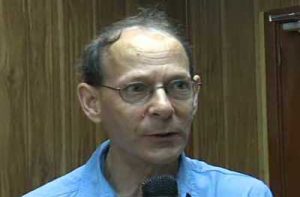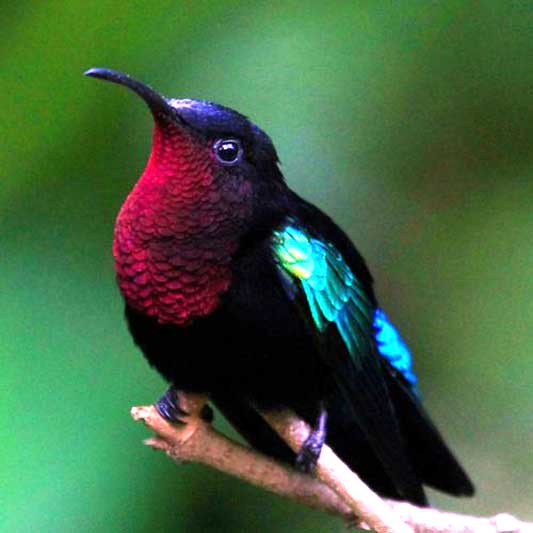Forestry, wildlife and parks employees are now more knowledgeable on the subject of hummingbirds and heliconias (lobster claw flowers or balisier) of the Lesser Antilles.
On Friday, May 20th officers attended a lecture headed by ecologist, Ethan Temeles, who is a professor of biology and environmental studies at Amherst College in the United States.
He presented his research on the purple-throated carib hummingbirds and their food plant, heliconia.
“The males and females of the species have very different bill sizes and shapes. The male bill is short and straight while the female is much longer and curved. The work which I’ve done shows that each sex is specialised for feeding at and pollinating one of two species of heliconia food plants. This is probably the best example of the world of the sex difference driven by feeding ecology more than anything else,” he reported.
The function was also attended by Director of Forestry, Wildlife and Parks, Minchinton Burton, local environmentalist, Arlington Jamesand others.
Professor Temeles describes what brought his studies to Dominica.
“I came to Dominica because of all the islands in the Lesser Antilles, Dominica is the most pristine. It has the moist natural rainforest remaining on it and the most natural cloud forest. Having studied these animals on islands where there was a great deal of disturbance; where people had cut down forests and planted bananas and resorts, I wanted to study them in a location that was more untouched. I have to say that the care that people have for Dominica, keep it that way. You don’t realise how unique it is until you to go the other islands.”
He stated that Dominica has received attention from the scientific community as a result of the research.
“By doing studies on this hummingbird and its food plant, we have been filmed by the BBC ![]() and Nature PBS. They have made films on that and shown them in both Britain and the United States. Every time they are raising money for the channels in the US, you see a purple-throated carib on TV. As a result of this, people elsewhere become aware f what Dominica has; that this bird is here and people want to see it and know about it.
and Nature PBS. They have made films on that and shown them in both Britain and the United States. Every time they are raising money for the channels in the US, you see a purple-throated carib on TV. As a result of this, people elsewhere become aware f what Dominica has; that this bird is here and people want to see it and know about it.
“The work I’ve done has made it into textbooks in the United States, there’s a permanent exhibit on this animal in the national museum(s) of the United States because of its importance. It really has tremendous importance to the scientific community in terms of a sex difference driven by ecology and how the plants are adapted for the birds. So it really is unique and Dominica has more of them than anywhere else,” he explained.





